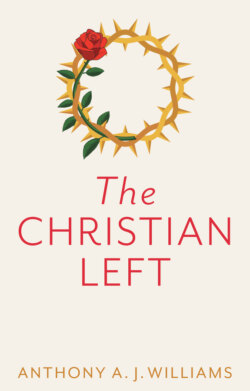Читать книгу The Christian Left - Anthony A. J. Williams - Страница 5
Introduction
ОглавлениеIn June 2020 then-US President Donald Trump staged a photo-op outside Washington DC’s St John’s Episcopal Church. Amid the Black Lives Matter protests, which had engulfed Washington and other inner cities since the racist murder of George Floyd a week previously, Trump walked from the White House to the church building, held aloft a Bible for the assembled press, and then walked back again.1 Trump’s aim in this ‘religious performance’ was to signal his faith commitment and Christian credentials to a voter base of white evangelicals.2 Predictably, many of these – three-quarters of whom would cast their vote for Trump that November – were delighted with the president’s performance.3 One such, a Republican candidate for the Florida Senate, described scenes of joy as his family watched Trump on TV: ‘My mother just shouted out, “God give him strength! He’s doing a Jericho walk!” … My mother started crying […] she started speaking in tongues […] I thought, look at my president! He’s establishing the Lord’s kingdom in the world.’4 Encapsulated in this one example is all we know – or think we know – about the relationship between Christianity and politics.
Yet, not everybody was impressed with Donald Trump’s religious signalling. Mariann Edgar Budde, the Episcopal Bishop of Washington DC, led the denunciations.
I just want the world to know, that we in the diocese of Washington, following Jesus and his way of love […] distance ourselves from the incendiary language of this President. We follow someone who lived a life of nonviolence and sacrificial love. We align ourselves with those seeking justice for the death of George Floyd and countless others […] Let me be clear: the President just used a Bible, the most sacred text of the Judeo-Christian tradition, and one of the churches of my diocese, without permission, as a backdrop for a message antithetical to the teachings of Jesus.5
A statement by the Episcopal bishops of New England also criticised Trump’s ‘disgraceful and morally repugnant’ actions, reaffirming the church’s mission to ‘serve our Lord Jesus Christ’s higher purpose: to extend love and mercy and justice for all, and especially for those whose life, liberty, and very humanity is threatened by the persistent sin of systemic racism and the contagion of white supremacy’.6 This is an entirely different interaction between Christianity and politics than the one many of us have come to expect.
The critical responses to Trump’s photo-op and the positioning of the church as an ally to the poor, the oppressed, and the mistreated are not an aberration or an anomaly. The Episcopalian bishops of Washington DC and New England, and others who spoke out, represent a long tradition of socialist and radical religion. The link between the (white) evangelical church of the United States and the economically neo-liberal, socially conservative agenda of the Republican Party should not be assumed to be the default setting for Christian political thought and action. The bishops’ intervention reminds us that many Christians have taken socially liberal or progressive positions. Many others have adopted left-wing, socialist critiques of capitalism and have sought a world in which laissez-faire individualism is replaced with a commitment to co-operation, collectivism and economic equality. In the pages that follow we examine this tradition, the Christian Left.
